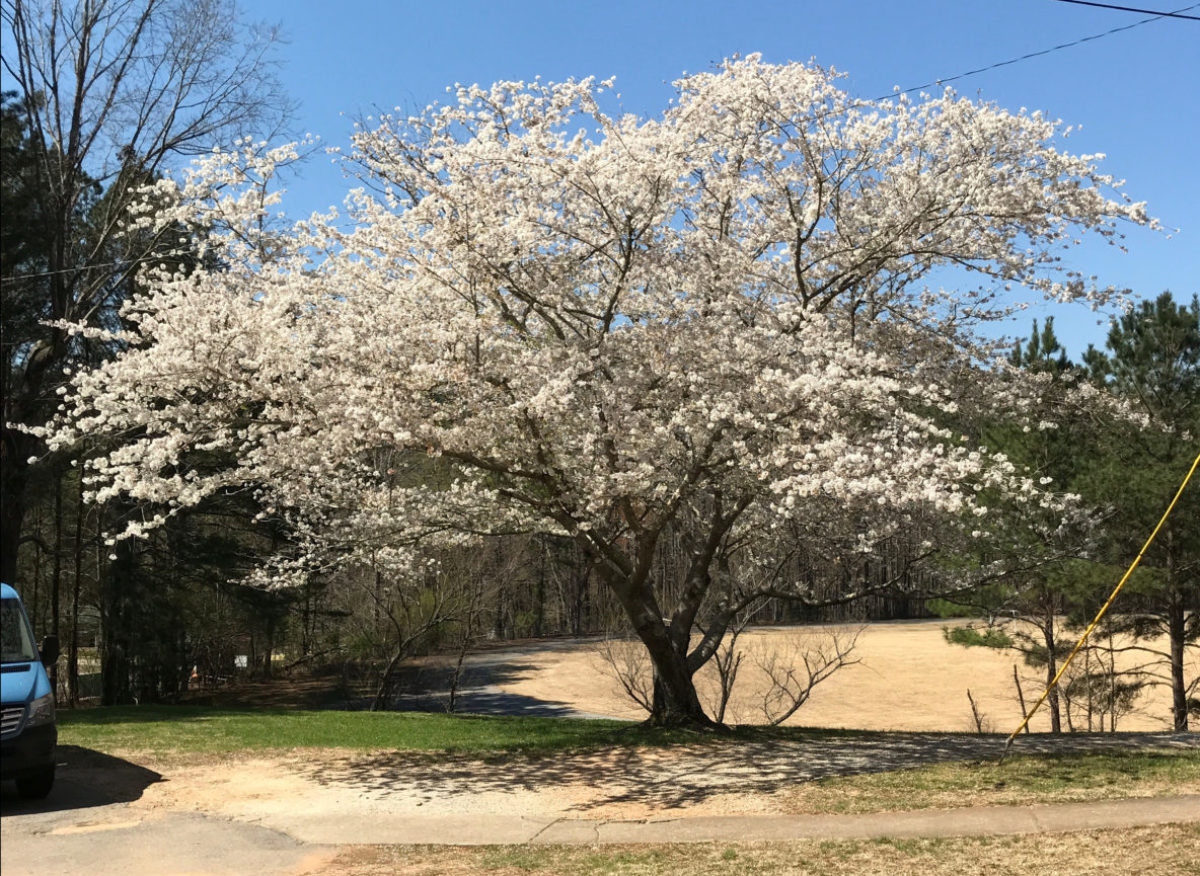 For many people, thoughts of springtime include images of blooming dogwoods. The trees’ spring flowers are a promise that the dreariness of winter is at an end. Dogwoods are popular landscape trees, and several types are enjoyed on the YV Inner Harbour campus.
For many people, thoughts of springtime include images of blooming dogwoods. The trees’ spring flowers are a promise that the dreariness of winter is at an end. Dogwoods are popular landscape trees, and several types are enjoyed on the YV Inner Harbour campus.
The most common dogwood in this area is the Cornus florida, which is an understory tree growing to about 20 to 30 feet tall and having a trunk diameter of about 6 to 8 inches. The way it grows in odd ways, never straight seeking light, is one way it can be recognized. Another way it can be recognized is how it is one of the first trees to flower in spring. The tree is almost unnoticeable being under the canopy of larger trees,  until its white flowers appear. Varieties of dogwood that have been planted for landscaping get more sun and tend to grow taller, straighter and thicker, and flowers may be white or pink. Pink dogwoods have smaller flowers and tend to grow a little slower than white ones. The attractive entrance to the campus auditorium has a white dogwood on one side and a pink one on the other. The interesting tree below is a white and a red dogwood grown together.
until its white flowers appear. Varieties of dogwood that have been planted for landscaping get more sun and tend to grow taller, straighter and thicker, and flowers may be white or pink. Pink dogwoods have smaller flowers and tend to grow a little slower than white ones. The attractive entrance to the campus auditorium has a white dogwood on one side and a pink one on the other. The interesting tree below is a white and a red dogwood grown together.
It is of interest that dogwood flowers are actually tiny, and surrounded by four showy petal-like bracts (a type of leaf) which are commonly mistaken for petals.  These bracts are white on the Cornaceae Cornus, subgenera florida, and have indentations on the end. There is a legend that Christ was crucified on a dogwood tree, and the four petals (2 long, 2 short) of the blossom are there to represent the cross. Each petal is said to bear the print of a rusty nail on the edge, and at the center of the blossom is a red crown of thorns. When cut down, the wood is said to bleed, showing red as shown in this picture. It has also been asserted that the tree was changed in form to its present small and twisted nature to insure it would not be used for that purpose again. The dogwood tree is not native to that area however, and this legend appears to be untrue.
These bracts are white on the Cornaceae Cornus, subgenera florida, and have indentations on the end. There is a legend that Christ was crucified on a dogwood tree, and the four petals (2 long, 2 short) of the blossom are there to represent the cross. Each petal is said to bear the print of a rusty nail on the edge, and at the center of the blossom is a red crown of thorns. When cut down, the wood is said to bleed, showing red as shown in this picture. It has also been asserted that the tree was changed in form to its present small and twisted nature to insure it would not be used for that purpose again. The dogwood tree is not native to that area however, and this legend appears to be untrue.

The dogwood leaf, bark and general shape has identifying features. The leaf is ovate, with the base wider than the tip. It is 3-5 inches long, has smooth edges, and is pointed at the end. Leaves are never flat but are wavy on the edges. The leaf has a center vein with curved veins running parallel to the leaf edges. Bark on the dogwood is knobby, scaly and easy to peel off. The shape of the tree as an understory appears twisted and scraggly and never straight as it reaches for light. Dogwoods are known for their April flowers, but lesser known is the fact that blooms may also occur after a stressful summer when they finally get rain. Dogwood trees bear small red berries that wildlife enjoy. Though some varities of dogwood  have berries edible to humans, the Cornus florida berries are considered toxic.
have berries edible to humans, the Cornus florida berries are considered toxic.
The wood of dogwood is dense and does not work well in word working. It has been used to make dulcimers and tool handles and walking sticks and arrows. The leaves and bark have been used for various medical purposes. The dogwood of today is primarily enjoyed as a tree that gives landscapes color and interest, especially in spring.






